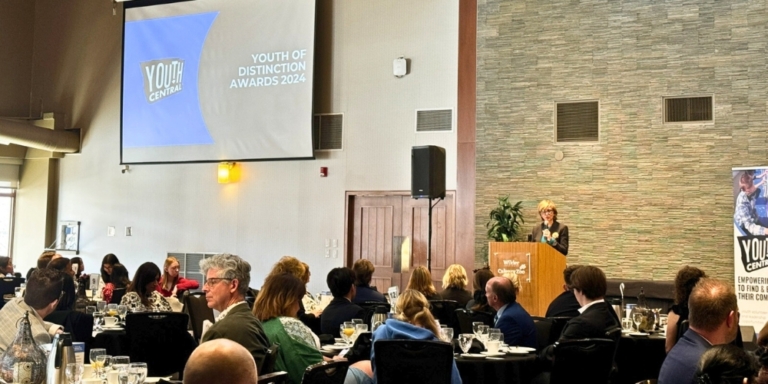Potholes plague Alberta cities and towns, and Lethbridge is no exception. Last winter, the city received over 200 pothole inquiries. If there were a permanent way to fix the pothole problem, citizens and cities would rejoice!
The solution might not be that far away, thanks to a clever Albertan.
An alumnus from Lethbridge College is paving the way toward better roads using glass.

Usually, roads and glass don’t go well together. But Hannah Thompson and Tyce Daniells, her colleague from the Civil Engineering Technology program, could change that.
Thompson graduated from Bow Valley High School in Cochrane in 2018 and completed her diploma in Civil Engineering Technology at Lethbridge College. She is currently working as an engineering technologist in training at an engineering firm in Lethbridge. To her surprise, Thompson and Daniells’ project was named a finalist for the Capstone Project of the Year Award in July.
The Capstone Project of the Year Award is a provincial honour from the Association of Science and Engineering Technology Professionals of Alberta (ASET). In the final year of their program, Thompson and Daniells teamed up to create a capstone project, where students are required to develop an idea that addresses problems in the engineering field.
Thompson and Daniells chose asphalt. The pair initially planned to crush recycled glass bottles and combine them with asphalt, but that didn’t work. According to Thompson, the sand didn’t mix well with the asphalt cement, leading them to their finalist-worthy idea.
Thompson and Daniells began testing glass fibre, made from extremely fine glass fibres. Glass fibre can be woven into fabrics and mixed into material to make them stronger. For example, glass fibre is commonly used in the automotive industry to fortify cars.
“Think of it as a spider web, how that sticks to things. Adding the glass fibre makes the asphalt last longer and prevents potholes, flooding, that kind of stuff,” Thompson told the Cochrane Eagle.
After playing around with different amounts of glass fibre, the pair found that five percent of glass fibres increased asphalt stability while more than five percent decreased performance. The team’s success earned them a spot as one of nine finalists for the Capstone Project of the Year Award.


“I didn’t think much of it… until I got an email saying that our project has been nominated…And that’s when everything kind of hit me,” Thompson told the Cochrane Times.
In the meantime, Thompson will continue her work as an engineering technologist, designing infrastructure like roads. But she knows an opportunity when she sees one, claiming if asphalt producers or government transportation departments want to pursue the glass fibre idea, she would be interested.
“I’ve already been able to do a variety of different projects…I’ve been involved in road design, on software, underground utility work where we would replace water lines, sanitary lines, storm lines, lift stations and pump stations,” said Thompson.
Thompson has always been a hands-on kind of girl. Growing up, she got along better with boys. While most girls her age were having sleepovers, Thompson was building a basement with her dad at their house in Bow Ridge in Cochrane. After her dad suggested civil engineering technology, she took to the field like a fish takes to water.
According to the Government of Canada Job Bank, four-fifths of civil engineers in the province are male. Thompson was the only girl in her class at Lethbridge College, but this didn’t bother her. She inspires women interested in pursuing a career in civil engineering.
ASET CEO Barry Cavanaugh commended the work of Thompson and Daniells, “Any research that makes more resilient something as fundamental to our daily lives as asphalt is a huge win for everyone, not just the former students who conducted that research.”
Whether or not the city’s potholes inspired Thompson and Daniells’ project is unknown, but it wouldn’t be surprising!
Their project could offer a long-term solution to the province’s pothole predicament if pursued.






